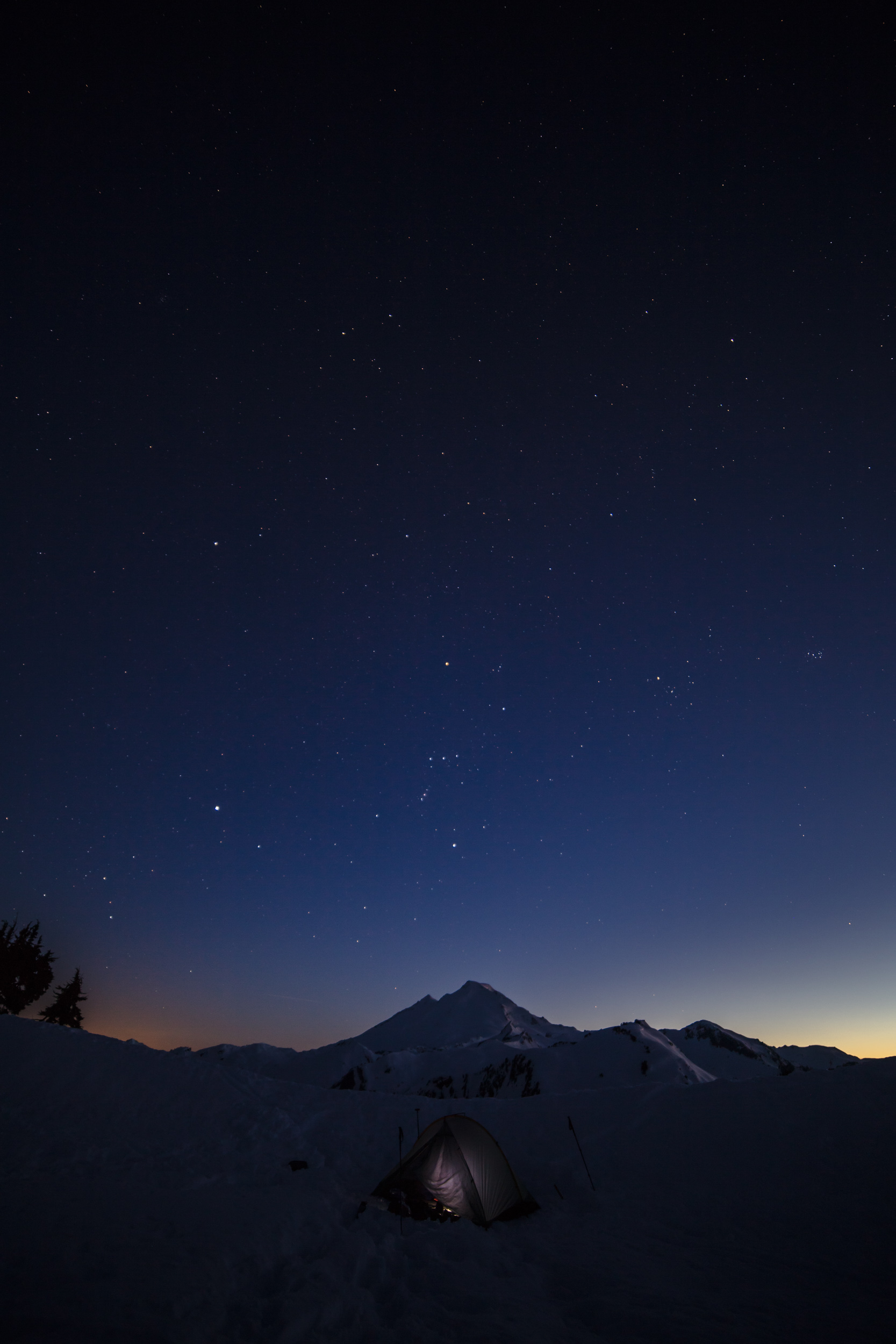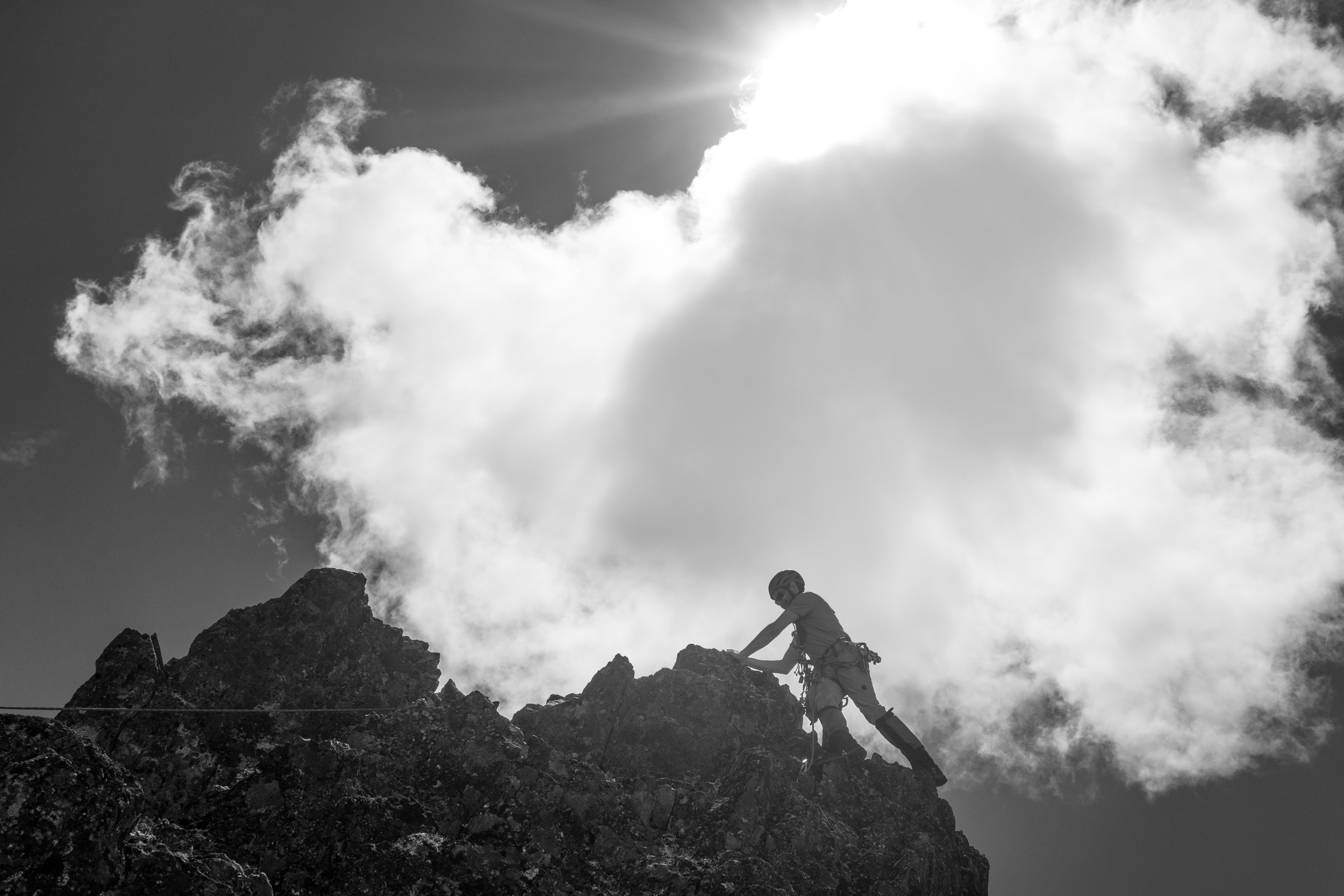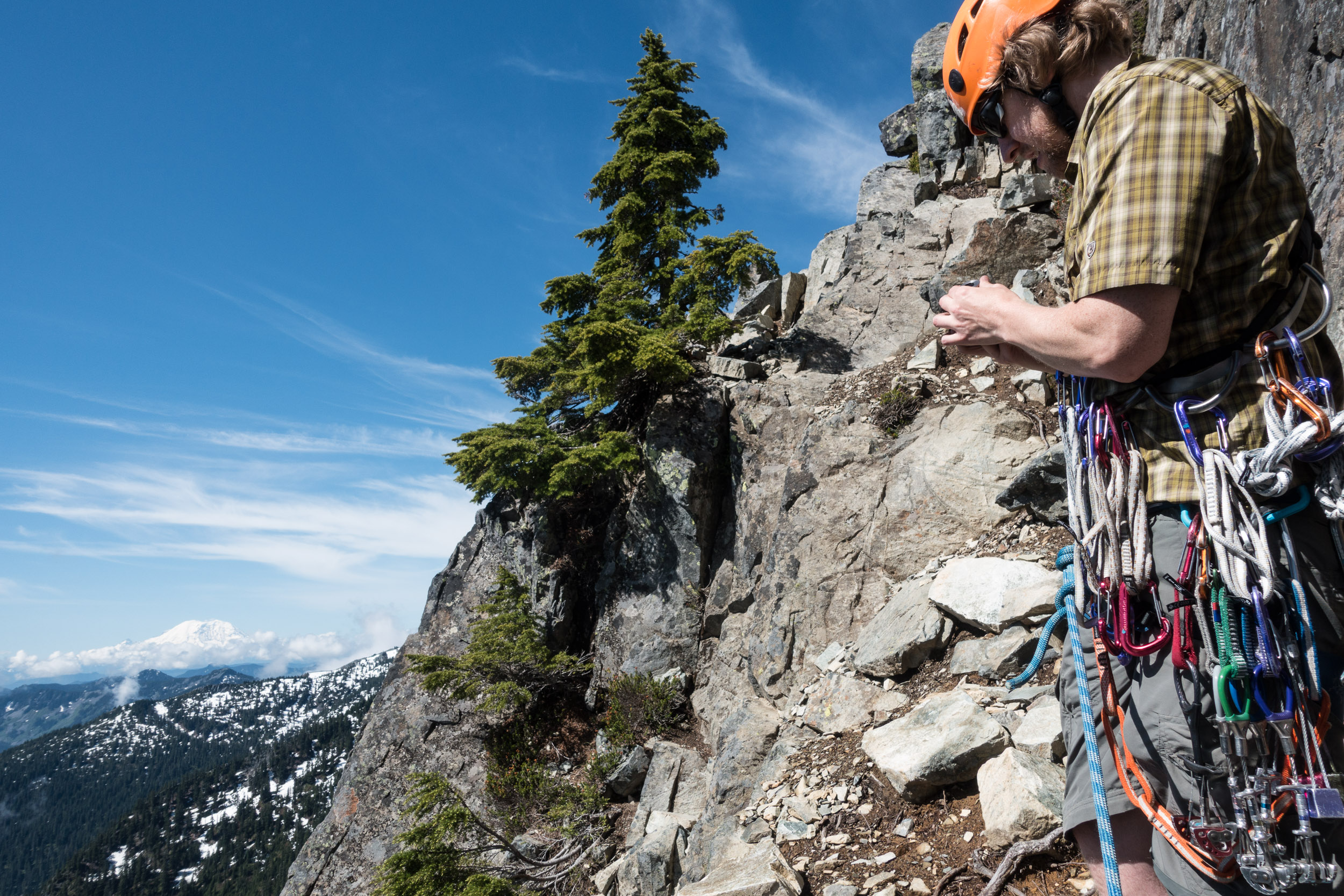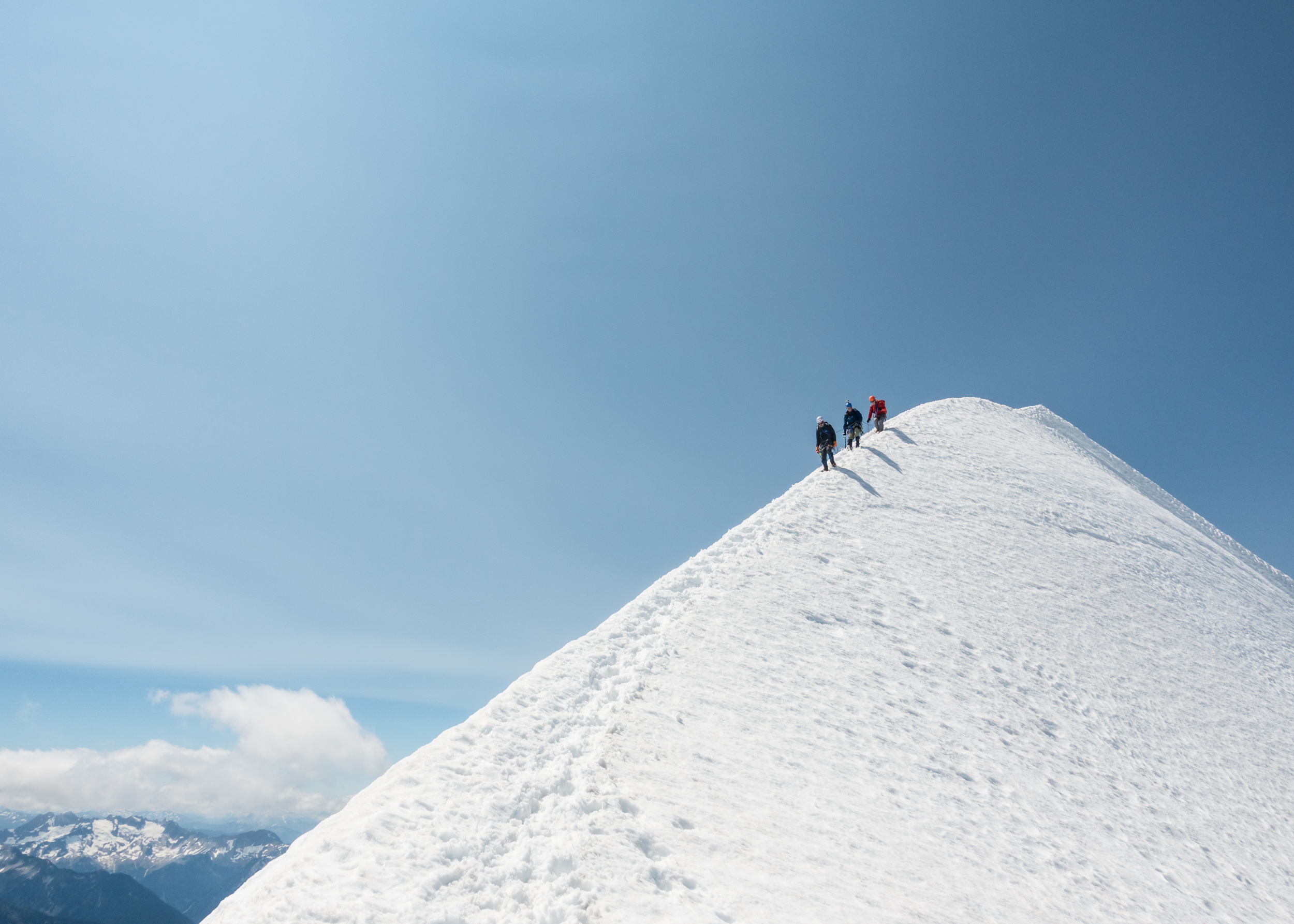Comfort
It is a privilege to live life without fear. To go through the quotidian without having to venture outside your comfort zone.
But what happens to you when you go years without taking risks, without encountering fear? Nothing happens. You remain the same. You do the same thing. And you do it again, and again, and again.
You do not experience the unknown.

From a distance
From great distances and pleasurable viewing locations, the danger of the mountains is silent to the inexperienced. It is unreal and you can’t grasp it. You know there is a challenge to get to the top, but your understanding of the challenge is abstract. You might not feel fear — you might just feel wonder at being in the presence of such natural beauty. And, because you cannot perceive the challenge, you cannot perceive the reward of reaching the top.
For years, I was your standard comfort-zone Pacific Northwest day-hiker. Nothing wrong with that. I was content with admiring these mountains from a distance. Over time, I grew interested in reaching the summits of the peaks framing the backgrounds of my favorite hikes. I didn’t know what the reward would be. I didn’t know what the challenge would feel like. I decided I would take a step forward — one step out of my comfort zone, one step toward the summit — and learn the basics of alpinism.
Decisions. Unknown.
Life decisions can be easy to make when you don’t fully understand the consequences of what you choose. Technology improves the ease: read a pamphlet, fill out a web form, click the send button. Decision made.
Learning the basics of alpinism was a long, challenging journey. I was pushed to my mental and physical limits. I spent countless hours tying knots, setting up rope systems, reading about mountain hazards, learning to navigate terrain, and re-learning how to walk up steep terrain. I remember standing at the edge of a 25-foot wall, anchored into a cable as I prepared for my first rappel, and feeling perhaps the most afraid I had ever felt in my life.
It was at times like those on the ledge (and there were many) when I would ask myself, “What the hell am I doing up here? Why am I doing this?” I’m terrified of heights. Why am I learning to climb mountains? But it is in these moments that you learn the most about yourself. You can’t push your personal limits without feeling fear.
Thinking back to the life decision to learn to climb: if I had understood the discomfort I would feel, if I had understood the challenges I would face, would I have made the same choice? I’m not sure. Sometimes you make a choice to avoid a negative consequence. Other times you make a choice to reap a reward. Climbing, I would learn, puts serious obstacles before a newcomer, but overcoming those obstacles is fulfilling beyond imagination.
After 6 months of training, I passed my tests, met all prerequisites, and was given the go-ahead to sign up for climbs. The first part of my education was done. It was time to actually climb.
Climbing
“The choices we make lead up to actual experiences. It is one thing to decide to climb a mountain. It is quite another to be on top of it.”
I felt remarkably little when I first decided to climb a mountain. I thought the learning and preparation I’d undergone would allow me to understand what I was about to go through. I thought I’d be able to analyze the route I was about to climb and anticipate the challenges I’d face. I thought I’d be able to visualize standing at the top of a mountain, full of triumph. It didn’t happen. The ignorance was still real — the unknown was still before me. And so, into the void I went.
Life
Much has been written about how climbing influences one’s outlook on life. These are personal writings, and you can’t really know what will happen to your outlook until you go and do it yourself. For me, the hiking comfort zone I never left resembled my life choices. I did the same types of hikes over and over again, wondering what was at the tops of those mountains. I made comfortable life choices again and again, wondering what was on the other side of the fence.
It is not intrinsically bad to do what makes you comfortable. You’ll just never find out what’s out there in the beyond if you don’t push the limits of your comfort zone, and that’s what climbing taught me, first and foremost.
In a month, after living in Seattle for 7 years — the only place I’ve lived after graduating from college — I’m going to be driving my life down to San Francisco to start a new job. Think about the next year after the move. If I knew about the challenges I would face, the discomfort I would feel in the next year as a result of this decision, would I make the same choice?
Yes.
Every step down from a summit is a step toward the next. Descending from Sahala Peak, North Cascades, Washington.
Details and Thanks
This story is intentionally abstract and omits a lot of detail about the specifics of my journey. In 2016, I completed the Seattle Mountaineers’ Basic Alpine Climbing Course, starting from zero climbing experience: the first time I ever set foot on a climbing wall was at the course’s first field trip in January 2016. I bought my first climbing shoes in February 2016.
To graduate from the course, I climbed The Castle (East Ridge), The Tooth (South Face), Sahale Peak (via Quien Sabe Glacier), and Eldorado Peak (via Inspiration Glacier). Outside of The Mountaineers, I made two failed attempts at Ruth Mountain and completed nearly a dozen scrambles.
Thanks to Craig Taylor, Glenn Eades, Jade Tabony, Kelli Taylor, John Leo, James Templeton, Brian Starlin, and all the other volunteers at The Mountaineers who helped me face my fears and touch the sky.




